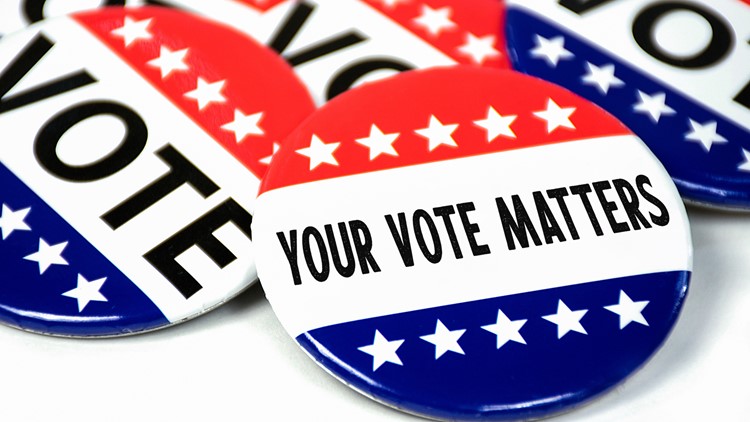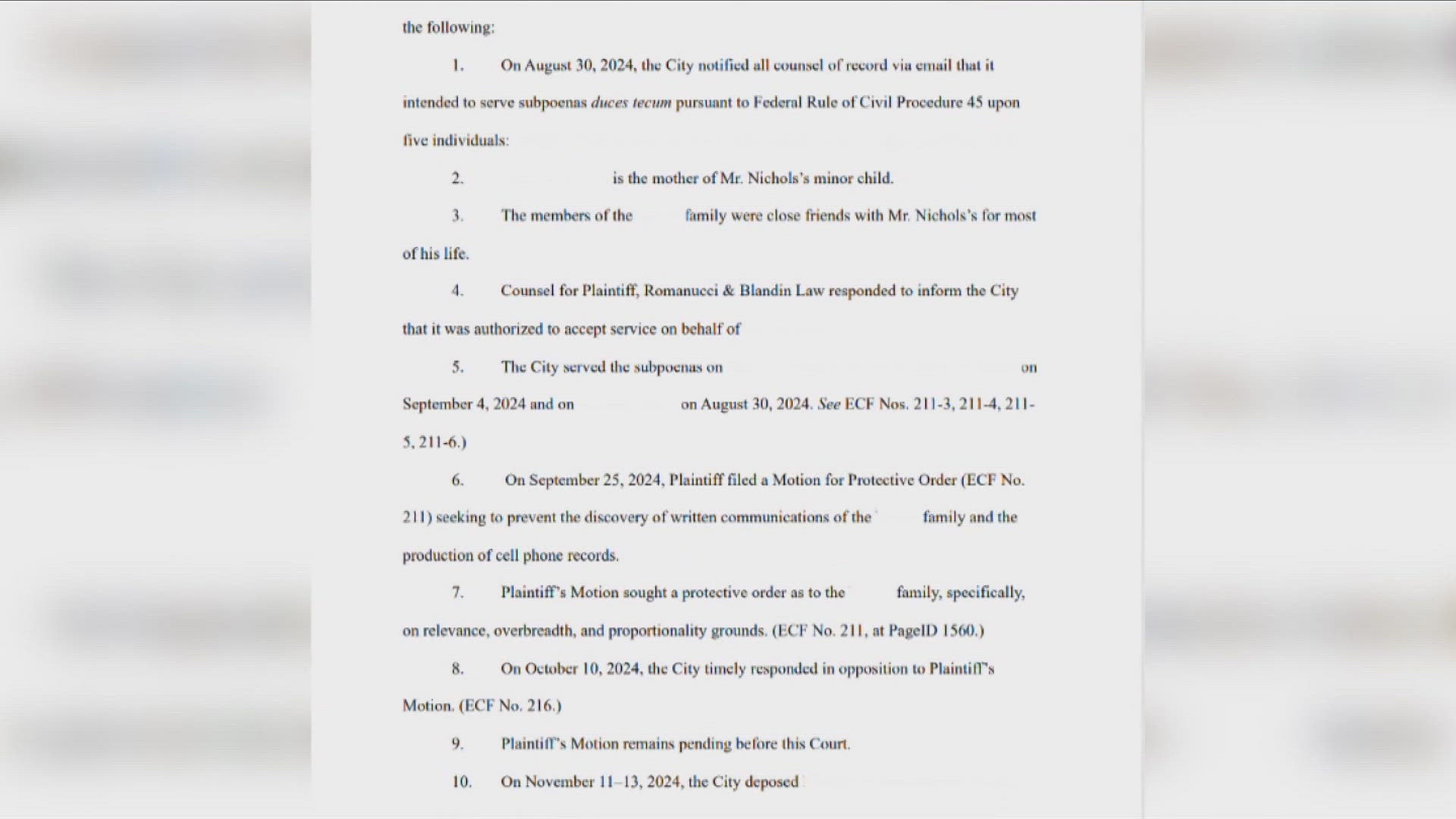MEMPHIS, Tenn. — Presidential elections draw the attention of millions of people relying on who they should trust to lead the nation. While campaign promises are widely publicized, and information is becoming more accessible, experts and voters are worried about more misleading and false information spreading.
Election season
People can trace debate fact-checking claims from independent sources back to 2004. Now, national publications are taking action to fact-check what's said during former President Donald Trump’s and Vice President Kamala Harris' race to the White House.
VERIFY looks into viewer-submitted claims about what they see on TV and the Internet, whether to check if a photo of a rally crowd is real or to break down why a claim is partially true and needs context.
AP News reported multiple outlets counted the number of false and misleading claims made by both Trump and President Joe Biden in the 2024 presidential debate in June.
Publications released its own reports the following day or by the time many people were asleep.
David Bauder with AP News pointed out that while fact-checking reports were being done during the debate, “none of them were available to the millions of people watching the two presidents in real time.”
This leaves people turning to the most common place where they receive information in this age of technology: social media.
According to a Pew Research Center survey, 65 percent of U.S. social media users say they use X (formerly Twitter) in some form to keep up with the latest news.
Jason Ponterotto, a left-leaning reporter for the New York Amsterdam News that plans to vote in November, gets some of his news from social media but takes everything he reads with a grain of salt.
"The spread of ‘information’ on social media is always risky as scores of what is out there on platforms like Twitter, Instagram and Facebook are deliberate lies and misinformation targeting Black and Brown low propensity voters, a lot of time with the mission of not turning them right, but at the very least just keeping them disengaged and not wanting to vote," Ponterotto said. "It shows up in platforms like 'The Shade Room' or 'Hollywood Unlocked' when they peddle headlines that are peddled from right wing sources and don’t give proper context on stories.
“My role as a reporter is about informing audiences of the facts in the face of blatant lies and making the connections and giving context for voters who are not as politically inclined and do not keep up with everything so that they are educated on what is at stake."
Rise of artificial intelligence
Artificial intelligence (AI) can create solutions and complications in many industries, especially with media. We use AI tools almost every day without realizing it, from Apple's Siri and Amazon's Alexa to GPS systems.
Retha Hill, Executive Director of the New Media Innovation and Entrepreneurship Lab at the Walter Cronkite School of Journalism and Mass Communication at Arizona State University, has dedicated the latter half of her career to studying future implications of AI. She's not surprised at how AI is growing in the political space.
“Even going back before this election, you would see people making very crude videos and memes," Hill said. "But the difference is a few years ago, the person had to have some skill to be able to go on Adobe or another video provider to create and manipulate something.”
In February 2024, during the New Hampshire primary election, CNN reported political consultant Steve Kramer paid a New Orleans street magician to create a fake audio recording using what sounded like President Joe Biden's voice. Kramer said, "he was trying to send a wake-up call about the potential malign uses of artificial intelligence, not influence the outcome."
Although there's not a simple way to prove if the recording played a role in voter turnout, it does send a message to AI's simple yet impactful effect as well as the increase in AI generators.
“A lot of the major AI tools and companies (i.e. Runway, Midjourney) won’t allow you to create a known person," Hill said.
"But there are a bunch of new video makers that are coming onboard that are uncensored. One came out about two weeks ago that will let you take branded material like Mickey Mouse and having him smoking a cigarette and drinking a beer."
Social media companies encourage their users to use their space to be as creative as they want. With that comes a conversation of media literacy.
Social media's response
YouTube has been around since 2005 due to its ability to adapt with advancing technology. Now that AI is becoming a big part in artists’ creative process, YouTube has included a "disclosing use of altered or synthetic content" section that states the following:
"Creators must disclose content that makes a real person appear to say or do something they didn’t do, alters footage of a real event or place and generates a realistic-looking scene that didn’t actually occur. This could include content that is fully or partially altered or created using audio, video or image creation or editing tools.”
Content creators should include a line in their videos' description that says how this content was made and specify if "sound or visuals were significantly edited or digitally generated."
An example of a YouTube video with this disclosure is a parody of a Kamala Harris campaign ad, which received about 365,000 views, created by YouTuber Mr Reagan.
The video includes pictures and clips from different stops on Harris' campaign trail and audio that appears to be an artificially generated imitation of her voice. The AI voice makes it appear Harris called herself "the ultimate diversity hire," among other things.
When Elon Musk reposted the video on X, which he owns and operates, the video reached 135.7 million views.
If a viewer sees the video for the first time on YouTube, the video’s thumbnail says the campaign ad is a parody and uses "altered or synthetic content," but Musk and X didn't include that disclaimer in his post.
“I think a lot of people don’t take the time out to investigate because it’s the typical nature of social media," Hill said. "You’re scrolling and seeing something and go, ‘Oh, that’s interesting,’ share it, repost it and keep going.”
YouTube's policy hopes to protect content creators from First Amendment lawsuits arguing content is defamatory instead of satire.
“It’s going to be up to the platform and these creators to come up and adhere to standards," Hill explains. "But once you put something out into the wild and you see an opportunity to make money or increase the number of people using your tool, I think the incentive for some of these outliers is to say, ‘We’re not responsible for what people do with it.'
“We heard this argument back in the early days of the Internet and they would compare it to a telephone service. The telephone service can provide you with the tools to make and receive these calls, but if you use the telephone service to do something illegal, you couldn’t hold the telephone company responsible for that.”
There are many tools - like Google Reverse Image Search - people can use to check if a photo is real or used in the right context. Hill suggests these steps for viewers to take in order to verify the validity of a video or photo:
“First of all, slow down before you repost and do your own diligence.
Take a look at the photo to see if the fingers are right. Look at the edges around people to see if there’s any distortion. You can look at people and see if there’s no shadow casting or part of their hair looks deformed, or an ear is missing.
What’s more challenging is with audio. But, if there’s no background noise and gaps in the audio’s frequency, then you might assume this is suspicious and probably AI. Even if it’s a clean recording and you’re talking to someone in the library, you’ll still be able to pick up the lights buzzing or murmuring outside.”
Fact-checking information on your own
Journalists follow a list of ethical principles to ensure their reporting is as objective as possible. But you can use similar practices to make sure others' reporting is accurate too.
- Verify "verified" accounts: The number of social media sources continues to increase every year. However, the credibility of verified social media accounts has decreased since the qualifications have changed. The blue check started on Twitter (X) in 2009 when celebrities discovered people impersonating them. On April 1, 2023, X revealed verified accounts must submit an application under new guidelines and pay a monthly fee in order to keep their blue check. Now that blue checks aren't limited to public figures and certified news outlets, it's important to do more research on everything you see regardless of the platform.
- Analyze your sources' content: Sources have their own target audiences and missions for how they want to deliver news. While they have the freedom to do so, some platforms are strictly opinion-based and editorialized. Ask yourself, "Where did the writer get this information from? Did that information come from a valid source?" Look for patterns in a platform's reporting so it's clear to identify an outlet's objective.
- Look for complete coverage with context: There are cases where the audience is learning about an ongoing story for the first time from one post. If a story is leaving out its origins, it leaves room to question its validity. Reporters must be transparent about how they received information and how events connect with each other. Research how other outlets reported the story in its entirety and see if the update tells a complete story. Leaving out key information can do potential harm to the parties involved in the story and the source itself.
"Voters like myself should always be critical regardless of the party, but it should be based on an overall grounded political understanding of what each party’s clear agenda is by what they are supporting and what they are pushing for across the country," Ponterotto said.



